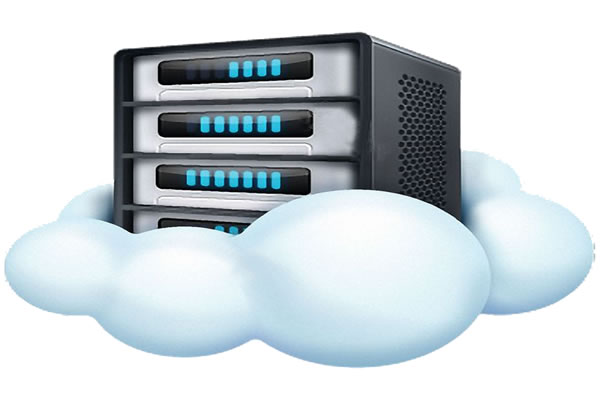In today's digital age, more and more websites and applications choose to use virtual private servers (VPS) to meet their performance and flexibility needs. US VPS hosts are highly favored for their high-speed network connection and stable performance. If you are planning to build your own VPS host but don’t know where to start, this article will provide you with comprehensive guidance to help you get started easily.
Virtual Private Server (VPS) is a technology that divides a physical server into multiple independent virtual servers. Each VPS has its own operating system, resources and IP address, and users can manage it like using a separate server. Compared to shared hosting, VPS provides higher performance and flexibility, and is also cheaper than dedicated servers.
Before building a VPS, it is crucial to choose a reliable VPS provider. You can compare based on company reputation, customer support, price and technical specifications. Ensure that the selected provider provides good network connections, data center location, and necessary technical support. In addition, viewing user reviews and feedback is also an effective way to understand service quality.
Once you have selected the right VPS provider, you can start the purchase process. Usually, you need to choose a suitable plan, configure server resources such as CPU, memory, and storage space, and complete payment. During this process, please read the Terms of Service and Privacy Policy carefully to ensure you are aware of all Service Content and limitations.
After the purchase is complete, you will receive the access credentials from the server. First, you need to connect to your VPS remotely. Generally speaking, you can use SSH (Secure Shell) to connect to Linux servers and Remote Desktop (RDP) to connect to Windows servers. Once connected, you can start configuring your VPS, including updating the system, installing the necessary software, and setting up a firewall.
On VPS, you can choose to install different operating systems, common ones include Linux (such as Ubuntu, CentOS) and Windows Server. Different operating systems are suitable for different application scenarios. Linux systems are usually considered to be a safer and more stable option, while Windows performs better in certain specific applications. After the selection is completed, follow the provider's instructions to install it.

Security is a part of VPS construction that cannot be ignored. Make sure your VPS is logged in with a strong password and SSH key, and regularly update the system and software to prevent security vulnerabilities. In addition, configuring a firewall and an intrusion detection system to limit unnecessary port opening can effectively improve the security of the server.
Depending on your needs, you may need to install some common software and services on your VPS. For example, if you want to build a website, you can install a web server (such as Apache or Nginx), a database (such as MySQL or PostgreSQL), etc. Ensure that best practices are followed when installing the software to optimize performance and security.
Once the VPS is built, regular monitoring and maintenance is crucial. You can use monitoring tools to track server performance metrics such as CPU usage, memory usage, and network traffic. In addition, data is backed up regularly to ensure rapid recovery in case of failures.
You may encounter some common problems when building and using VPS. For example, how to solve network connectivity problems, how to optimize performance, etc. It is recommended to consult the provider's documentation or community forum, and there are usually detailed solutions and suggestions.
Through this guide, we hope you have a clearer understanding of the construction of US VPS hosts. Choosing the right VPS provider, performing reasonable configuration and regular maintenance are key to success. During the construction process, if you encounter difficulties, seek technical support in time or refer to relevant documents will help you complete the construction smoothly. I hope you can explore your own wonderful things in the world of VPS!
- Latest articles
- Advantages And Practical Applications Of Hong Kong Positioning Server
- Practical Tips On How To Buy Thai Cloud Servers At Low Prices
- The Best Way To Get A Free Ip Address For A Taiwanese Server
- Explore The Best Usage Scenarios Of Thailand Dynamic Dial-up Vps
- Learn The Truth About Whether Server Rent In Thailand Is Expensive
- Analysis Of Diverse Application Scenarios Of Hong Kong Vps
- Comparison And Recommendation Of The Cheapest Cloud Servers In Vietnam
- Best Options And Suggestions For Renting A Server Outside Malaysia
- Stability Evaluation And User Feedback Of Shatin Computer Room In Hong Kong
- Understand The Functions And Application Scenarios Of Thailand's Lightweight Cloud Servers
- Popular tags
-
Quick Access To YouTube's US VPS Recommendations And Comparisons
This article will recommend a number of US VPS suitable for quick access to YouTube, and provide detailed comparisons to help you choose the most suitable service. -
Optimization Tips For Alibaba Cloud Accessing US Servers
This article introduces Alibaba Cloud's optimization techniques for accessing US servers to help users improve access speed and stability. -
Comparative Analysis Of The Best American Vps Cloud Server Brands
this article compares and analyzes the best american vps cloud server brands to help users choose the right service.


